Reviews
Vanuatu: the world’s most accessible active volcano, a renowned wreck dive, and ancient kastom villages
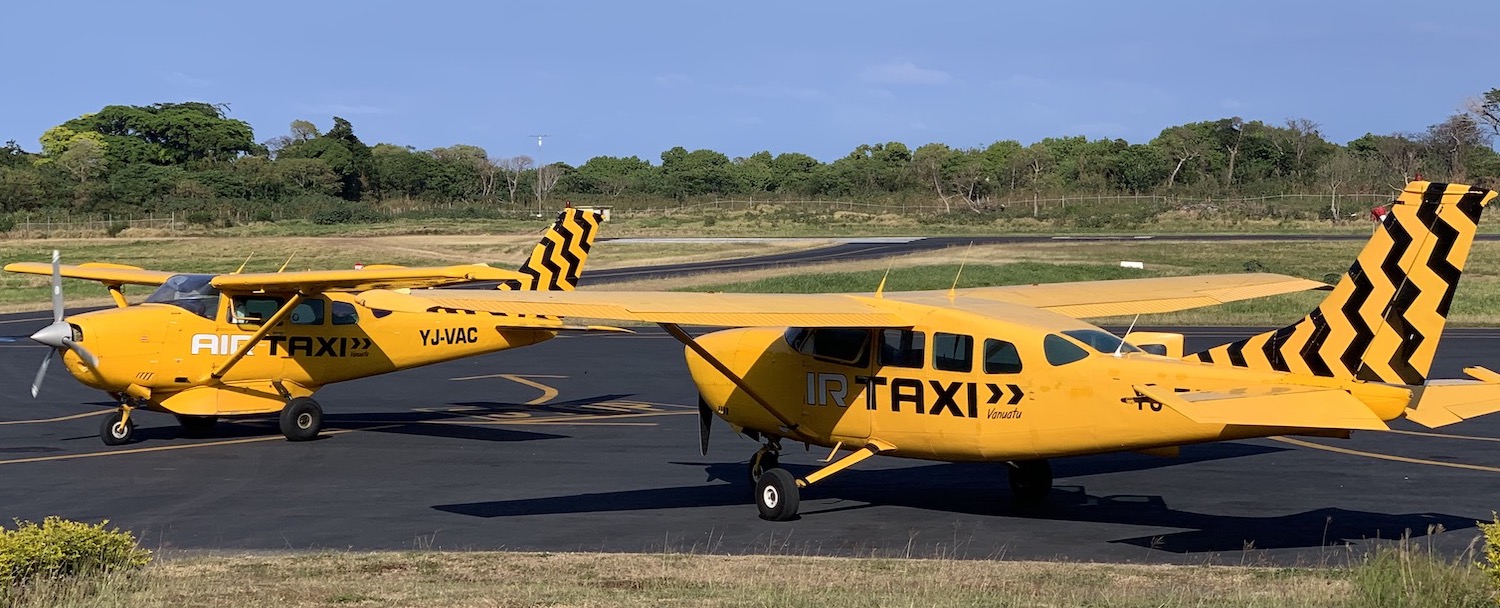
The outstanding attraction of Vanuatu is that you can peer over the lip of an active volcano, with no protective barrier whatsoever, and stare straight into the flaming firebox 400 metres below. It is a spectacular experience. There is also an American luxury ocean liner that usually rates in the world’s top five wreck dives. Plus there is the opportunity to interact with traditional villagers with ancient customs and a subsistence living.
These are sufficient reasons to come. It could have been even better because despite being a bit rough around the edges there is plenty of natural beauty on land and under sea. Yet the tourist industry is so squarely aimed at package tourists from Australia and New Zealand that independent travellers might easily conclude that humans have failed to make the best of what they have here. After all, this is the land where Brooke Shields cavorted in Blue Lagoon, and this is the real home of Bali Hai from the South Pacific musical, icons of tropical paradise in popular culture the world over. Sadly, Vanuatu does not quite live up to those expectations, which is not for the lack of raw materials.
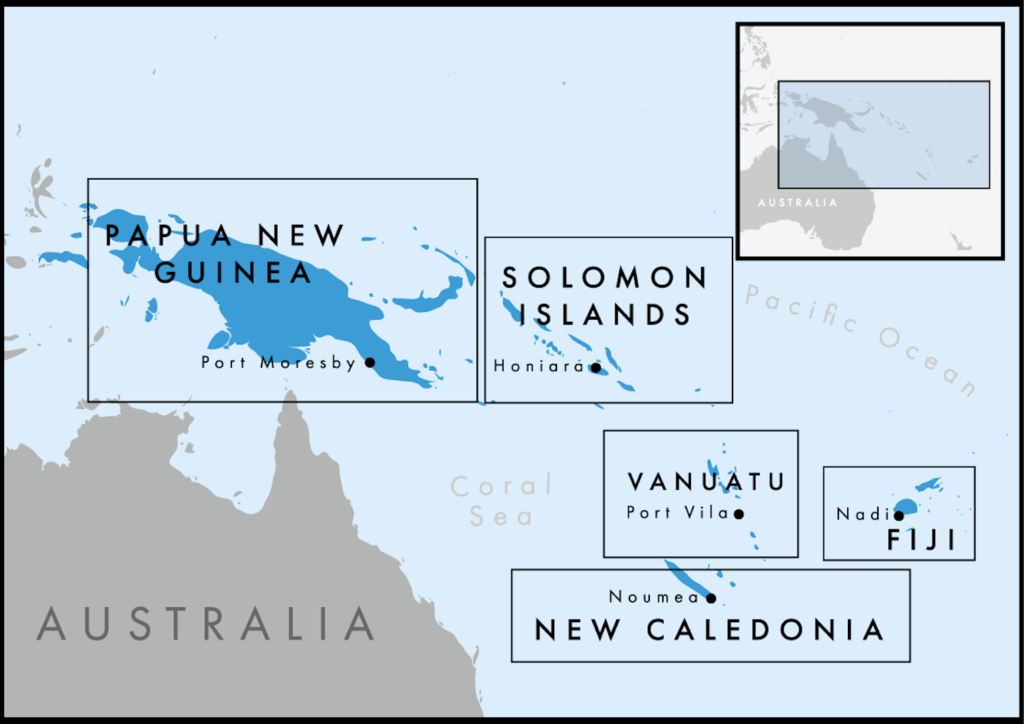
In the archipelago that stretches for 1,300 kilometres beyond the north-east of Australia there are 80 or so islands, formed by volcanic eruptions, which continue to experience earthquakes at a rate of more than once every two years. And Cyclone Pam did particular damage here in 2015. This is a haven for natural disasters.
These islands had been inhabited by Melanesians for over 3,000 years before the first Europeans landed in 1606. They were colonised by both the British and the French in the eighteenth century and in 1906 as the New Hebrides they formed a very rare form of colonial condominium in which sovereignty was shared between the two imperial powers, an arrangement that lasted right up until independence in 1980. This effectively divided the country into two separate societies – one Anglophone and one Francophone – a feature that persists today, for instance with schools teaching in either one language or the other, and with each community represented by different political parties.
The Republic of Vanuatu (“eternal land”) was created after the Coconut War that led to independence, since when only the government and tribal chiefs are legally allowed to own land; other islanders and foreigners are merely able to rent for a period equivalent to the productive life of a coconut palm, 75 years. Legislators are elected – though 14 of the 52 parliamentarians were recently imprisoned for corruption – and the prime minister is also advised by a National Council of Chiefs. Chiefs also feature heavily on the Vatu bank notes and coins, giving a strong taste of where the country is rooted even today.
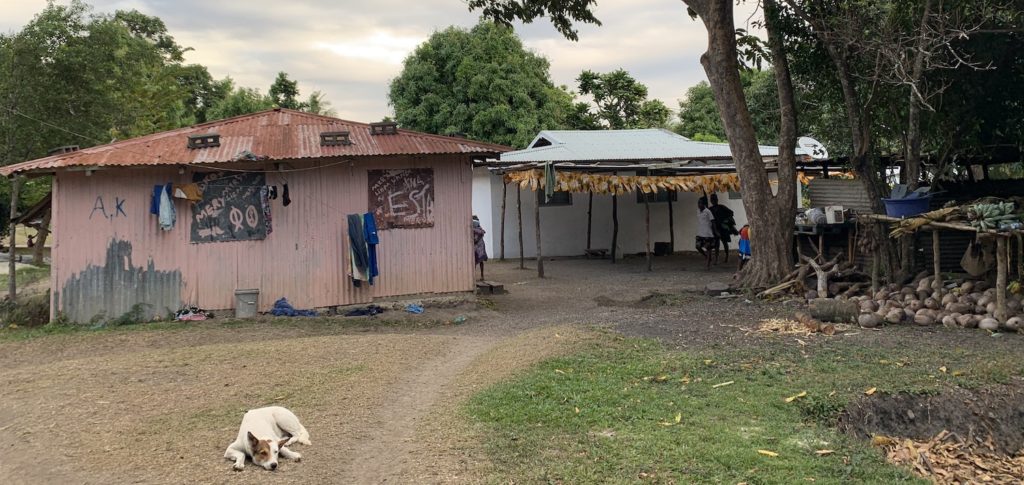
These days there are about 275,000 Ni-Vanuatan people, who speak well over a hundred different languages between them. Some 98.5% are Melanesians. Despite their poverty, they live in a country visibly more developed than neighbouring Solomon Islands, with seemingly universal mobile phone usage, robust 3G, tarmac roads and not a betel nut in sight.
April to October is the dry season, when it averages 25°C in the day and 20°C at night. Despite the pitch to ANZ mass market tourism, there are actually very few foreigners here with us in August. Apparently, this is partly explained by the fact that after Cyclone Pam Qantas pulled out of the route, claiming the airport is unsafe and so bruising the lowest hanging fruit.
Efate
It’s not that easy to get between the islands, and almost every visitor will have to enter the country via the main base of Efate, three-quarters of the way down the chain, home to the capital, Port Vila, on its south-west corner, which ain’t all that. It’s an hour and a half flight from Honiara in the Solomon Islands to Port Vila, during which you get lovely views of the archipeligo. Don’t bother with a taxi from outside the international terminal, instead turn right and walk 30m to the domestic one to get a minibus. They are much cheaper and friendlier, like taxes they seem to go wherever you want, and usually you will be the only passenger anyway.
Unfortunately, Port Vila is neither picturesque nor characterful, but thoughtlessly put together and scruffy. In a very handsome cove, with splendid yachts moored on the azure waters, ugly buildings are haphazardly spread along the charmless front. There are even signs explaining it is forbidden to swim in the bright blue sea in front of the town because it is heavily contaminated. Culturally, this is a Melanesian-French-Australian mash-up where traditional and sophisticated cultures are being overtaken by a burger, beer and bogan influence.
The Grand Hotel & Casino on the front is probably the best place in town, with good views out to pretty Irikiki Island in the bay. Weirdly, the prime real estate of Irikiki has been handed over to a single private all-inclusive Resort & Spa. The same has happened on Hideaway Island around the corner in the next bay along with its Resort. However, we chose to avoid the front and stayed at the Terraces of the Mangoes Resort which is a fifteen minute walk down the hill to the town centre.

North of the Grand Hotel is a waterside path that passes the Big Blue dive shop, next to Nambawan Cafe with its excellent smoothies and all-day breakfasts and all-day lunches, among a few tat shops, and near the large fruit market. Behind here, parallel to the ocean, is the main drag full of duty free stores aimed at the cruise ship crowd who must wonder what all the fuss is about. Further north is Au Fare, about the best bar for a Tusker beer that looks across the sea.
South of the Grand Hotel are a couple of large Aû Bon Marché supermarkets, L’Houstalet, an esteemed French restaurant in the hands of Clement whose star dish, flying fox, causes quite a stir, and the other dive shop in town, Nautilus. There is some basic diving in the bay. And that’s your lot.
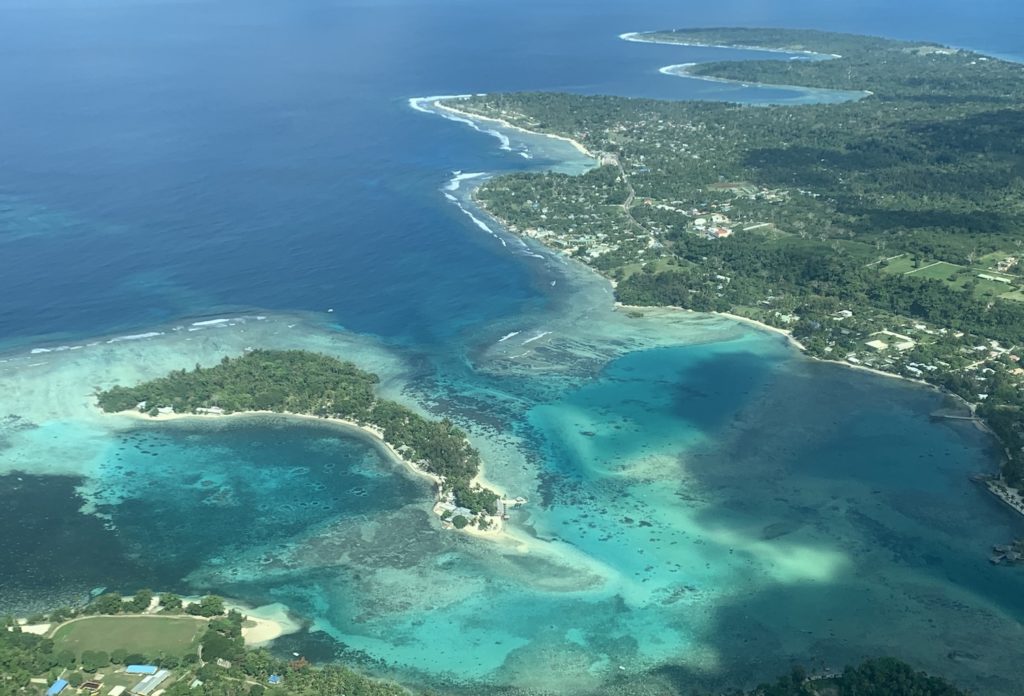
Although Efate lacks the white sand beaches you might assume you will find here, it does have a very pretty coast and there are Avis, Europcar, Hertz and World Car Rentals outlets in town. It takes about four or five hours to circle the island.
Heading anti-clockwise you drive first down the rather desolate Pango peninsula, swept by trade winds, where just past the Chinese Embassy with its barbed-wire fence there are a series of private beach bungalows, notably Warwick Le Lagon, Nasama, Breakas and Coco.

The south coast is gorgeous if rugged. The best place is 45 minutes down the dirt track that offshoots the perimeter tarmac road: Tamanu On The Beach, a collection of several pleasant cottages and an excellent restaurant on a pebbled beach.
The north is much calmer and there are lovely views of Emao, Pele, N’Guna and Moso islands just offshore. At Port Havannah you can catch a ferry out and rent gear at Tranquility dive shop. There are two good hotels in which to stay up here: the big Havannah, and the tiny Divi’s, where Scot and Darleen have just two cabanas with only mosquito netting and glass walls around a big bedroom right in the middle of the jungle.
Tanna
Tanna is an island right near the bottom of the chain. This was the centre of an infamous cargo cult in the first half of the twentieth century. The John Frum Movement practiced superstitious rituals hoping to receive donations of modern goods from more technologically advanced countries. It is also worth noting that these islanders have long been large consumers of kava, an intoxicating local beverage.
The main reason for coming here is Vanuatu’s star attraction: Mount Yasur, the world’s most accessible active volcano. Mount Yasur has erupted several times every single hour for 800 years, caused by the eastward-moving Indo-Australian Plate being subducted under the westward-moving Pacific Plate. The most recent big one was in 2013.
It is easy to fly here from Port Vila independently with Air Vanuatu, but they have large commercial aircraft that go straight from airport to airport. The advantages of the six seater Air Taxi Cessna tours are that after a scenic hour and twenty minutes across the ocean they fly very low right over the top of the crater and everyone gets a breathtaking view to remember for life.
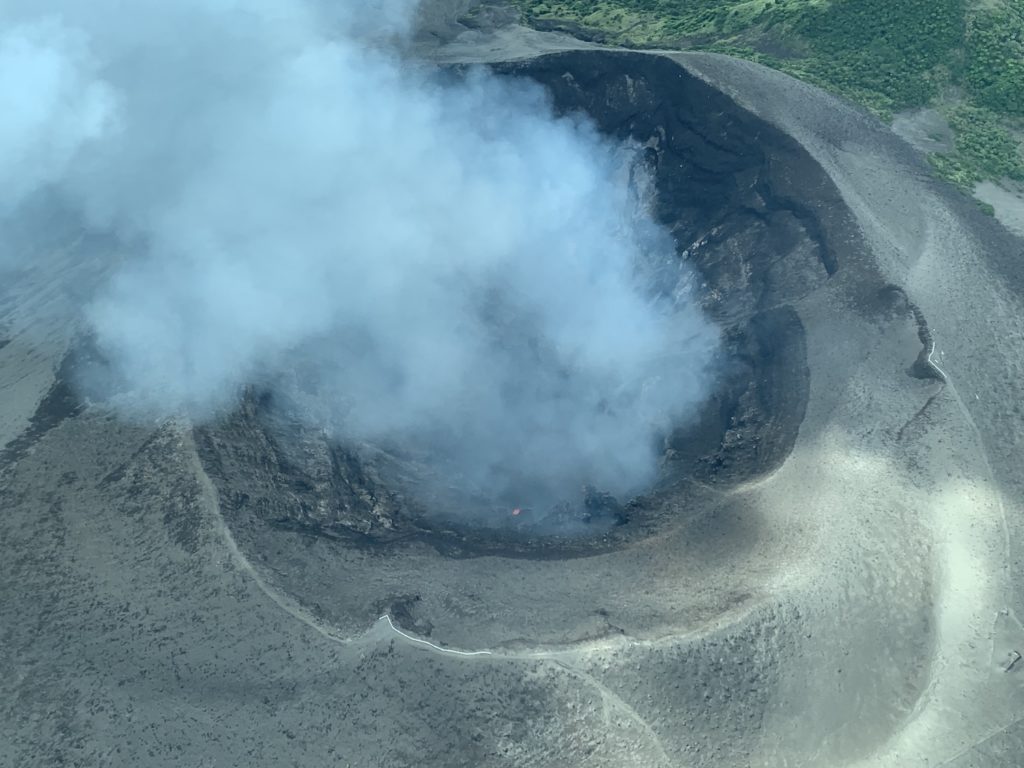
After circling over the fiery furnace you land then take a 4×4 across the lava, tephra, pumice and ash desert, caused by previous major eruptions, up very close to the top. Then it is just a few hundred metres to walk up as it gets dark when you can peer over the precipice and watch the fireworks of molten rock erupting below.
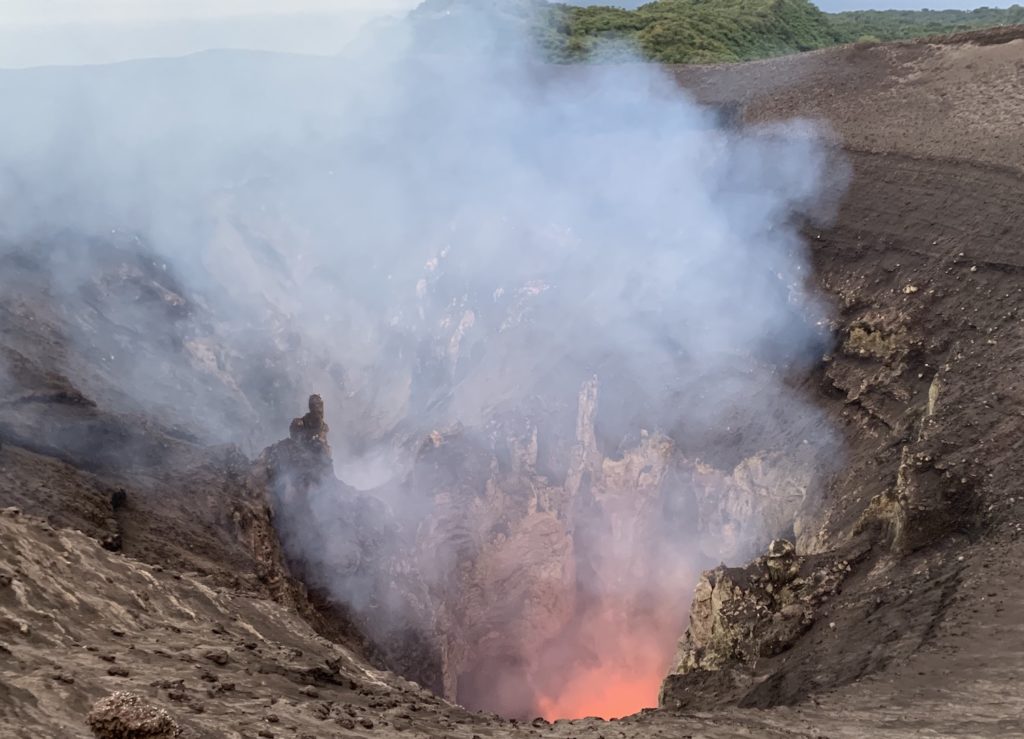
In fact, it is possible to walk almost all the way round the summit right on the edge. There is a short stretch of broken railings in one part but otherwise there is no barrier at all. It is impossible to imagine getting any closer.

The place to stay on Tanna is John’s Rockwater Resort, replete with sandy floors and no need for a lock on the room door. It has good dinner and breakfast too.
Espirito Santo & Ambae
Three-quarters of the way up the chain are the two other islands of interest – Espiritu Santo and Ambae – though we did not go there on this trip.
Santo, as it is known, is Vanuatu’s largest island and home to a pair of important activities: scuba diving and beach loafing.
For divers, there are two key sites. The first is the SS President Coolidge. This ship was completed in 1931 and started life as an American luxury ocean liner before converting to a troop carrier during WWII. It was sunk by accident by friendly mines in 1942 with the loss of one life. These days, it is renowned as one of the best wreck dives in the world, not least according to highly respected Scuba Travel. It is so highly regarded because of its intact canons, trucks, chandeliers, statue of a lady riding a unicorn, mosaic tile fountain and other cargo. There is also plentiful coral and fish. The second site is Million Dollar Point, where at the end of the War the US troops dumped all their surplus equipment before returning home. This included bulldozers, aeroplane engines, jeeps and lots more military hardware.
For loafers, head to the east coast of Santo. Brooke Shields shot Blue Lagoon at Champagne Beach, which along with nearby Port Olry often appears in lists of the world’s best sandy spots.
The volcanic island of Ambea, due east from Santo, is rarely visited, but it has one great story to tell: this was the actual Bali Hai in Rodgers and Hammerstein’s South Pacific musical.
Kastom
The Pijin word kastom refers to traditional culture or customs in art, economics, religion, magic and so on. While kastom concepts are found throughout Melanesia, they are strongest here in Vanuatu so exploring them is a crucial ingredient in any trip. There are kastom villages where you might see barefoot men in loincloths and bare breasted women in grass skirts while pigs roam freely about wooden and thatched houses that apparently can sustain cyclones.
In several kastom or traditonal villages, notably on Tanna and Malekula, which is a little further north of Efate, men live naked but for a bark belt holding foliage wrapped around their circumcised penises, but not their testicles, which remain uncovered. On Malekula there are even a pair of villages called Big Nambas and Small Nambas which translate as Big Penis Sheaths and Small Penis Sheaths.
On Efate, there is a kustom village in the north at Taka, not far from the WWII Corsair fighter plane wreck popular with snorkelers, and another just outside Port Vila at Ekasup. You can book tours to meet traditional villagers. At one level these are of course an anthropologists’ dream; but at another they can feel a little too much like tourist attractions.
In any case, there are local villages that you can just wander into unannounced. A very good one is Mankliliu in the north of Efate, with a population of 300. Here, the villagers may wear casual clothes just like in the west, but they live a very different kind of life. The housing is mostly bamboo shacks with corrugated roofing, though there are occasional concrete homes and a very grand brick church; the two shops look a little rickety. The roads are just dirt tracks. People are very poor, keeping chickens and pigs, growing avocado, lychee and mango among the pandanus trees around the village.
While villagers cling to ancient traditions and are held down by poverty, things are changing. Mankliliu received electricity for the very first time in 2018. And parents no longer scout wives for their sons by visiting neighbouring villages because these days their children tend to find mates through Facebook groups. There is still a dowry expected, and the going rate for what is called the “bride price” that needs to be paid to the wife’s parents seems to be one pig.
Typical of villages in Vanuatu, Mankililiu is ruled over by a chief, supported by a council of advisors. When it comes to taking big decisons, about say how to deal with a crime in the community, the chief communes with a special stone set in a spiritual part of the forest. It is not entirely clear how this squares with the prevalent Christianity. The chief is far from a remote figure. In fact Chief Marmar, and his wife, know to all as Mrs Chief, can often be found hanging out at the local kava bar. He is the guy to my left in this photo.
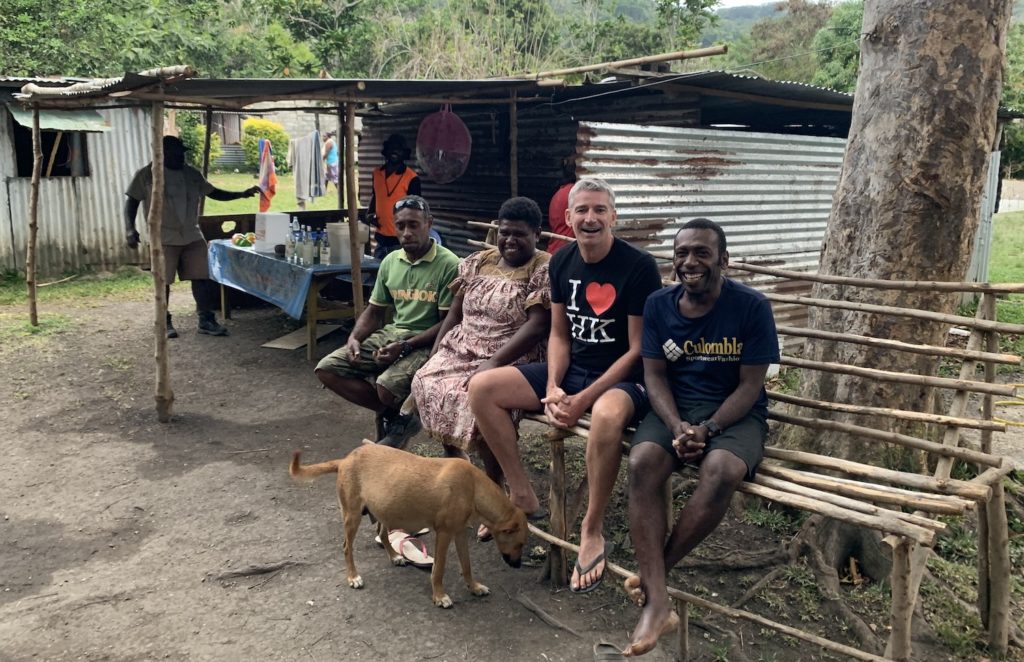
Kava is an intoxicating herbal extract made from the ground roots of a plant in the pepper family that has been steeped in cold water. It is drunk across the Pacific Islands, having started in Vanuatu 3,000 years ago then spread to Fiji in Melanesia, Kosrae and Pohnpei in Micronesia and much of Polynesia.
On Efate it is made fresh in Port Vila, where there are dozens of nakamals or kava bars, identifiable from their green lights outside; many are open 24-hours a day. Kava goes off quickly so villagers all over Efate go to Port Vila every day to bring back plastic tubs and bottles of this brown sludge that looks like the run-off from mixed concrete. It costs 50 Vatu or 40 Euro cents per nip, and the routine is to slug half a dozen nips all in one go to avoid getting too much of the muddy taste. It’s best taken on an empty stomach with a whisky chaser; then it will chill you out like a spliff and leave you dreaming like a baby.
Happy talk, keep talking happy talk
Talk about things you’d like to do
You got to have a dream
If you don’t have a dream
How you gonna make a dream come true?
Talk about the moon, floating in the sky
Looking like a lily on a lake
Talk about a bird, learning how to fly
Making all the music he can make